"The US federal budget is on an unsustainable path, has been for some time. But this is not the time to give priority to those concerns." - Federal Reserve Chairman Jerome Powell
The world is changing. As I have covered in other posts, the technology that mankind is adopting is causing a great deal of social change. But not like one would expect. It’s not just using a smart phone instead of a rotary dial up phone. It’s not just using a Car Ride APP instead of hailing a taxi. It’s more than that…
It is disrupting many “imprisonment” and “stratification” schemes. Schemes that have become so ingrained into society that we (mistakenly) believe that they are a fundamental part of what our society is.
A stratification scheme is one in which a sentience (or a way of thinking and acting) forces upon society a special system of control. It is a system where they have advantage over other groups of people. And they control the access to this system. They let some people in, and leave others out. It's an exclusive system. As the saying goes in America "they control what will happen, and you ain't a part of it". The caste system in India is a good example of this. But there are many others. Most especially in America. Think of any system where you need to go through a "gauntlet of approvals" to get something done. And then discover that the ones who "had it easy", and did not need to fight through that gauntlet (such as the wealthy and the "well connected") were sitting here smug when you finally (after many hoop jumps) arrived. These systems have saturated America today. It is at a point that a "diversity" movement has organized to give others (who normally are restricted from entering these stratified societies) a chance to "break through" those invisible "glass walls".
These schemes…
… such as the Banking System, and the University System, and the Media System are all under stress and being replaced. (There are many others, such as the Judicial system, the Professional Registration System, and the Internet Paywall systems.) These schemes developed over time as a way for one group of people to have benefit over others. It was a way to control others (not overtly) but through quiet manipulation.
- How Corruption is Becoming America’s Operating System …
- Top 10 Ways the United States Is the Most Corrupt …
- Our corrupt judicial system – American Thinker
- America’s Political System Thrives On Corruption | HuffPost
- Corruption in the USA: the difference a year makes …
- The United States Is the Most Corrupt Country in the World
- Measuring Illegal and Legal Corruption in American States …
- America’s Corruption Is a National Security Threat …
- Top Ten Signs The US Is The Most Corrupt Nation In The …
- 15 Effects of Corruption | Its impact on People, Society …
Most Americans are aware that corruption exists.
However, they point to some other nation. A nation that they read about in the “news”, and repeat loudly “America is the best nation on the earth!”. “America has problems” they retort, but it is not as bad as the rest of the world.
How do they know this mantra?
The American “news” media told them. That’s how.
Just stay in your little prison you mindless, deplorable debit serfs. Be content with your pathetic way of life. And work! Work! Work! If not, then the system will keep you so drugged up that you will be incapable of rising up and rebelling.
True, to some degree, more or less, the rest of the world engages in petty corruption. A cup of tea here, a few dollars there. However, in America, it is institutionalized and legalized at an enormous wholesale level. All by serious long-time crooks and con-artists.
The Presidential election of 2016 was a choice between two "mafia" bosses; [1] Democrat - The Clinton Crime Syndicate. Hillary Clinton. [2] Republican - A New York Casino Owner - Donald Trump.
But, people fought back…
The control of the media was the first battle.
Seemingly overnight, in the 1990’s, all sorts of alternatives to the mainstream media popped up. And the PTB were ending up exhausted trying to fright this “wack a mole” phenomenon. But they eventually won. The alternative media tended to cluster in groups by political extremes. So the PTB, and their government bodies, just simply ended up controlling the multiple media outlets. They now control the narratives for all Alt-Left, Alt-Right, and Mainstream media. And, the battle is not over. They are tightening their control over this medium in all sorts of ways.
The control over who works and who doesn’t is controlled by “the University System”. Over time, now a days, almost all positions except for semi-skilled and unskilled work requires a university degree. It’s pretty bad when a receptionist position needs to have a four year college education to work.
Well, that system is starting to fracture and crash.
And as I see it, it is going down in flames, and very little in the way of alternatives (in America) are replacing it. Overseas, in Europe and China, it’s a completely different matter. I think that I will cover this issue later on in another post, as it is interesting, and very complex.
And the control of the money / Banks is what I just talked about in my latest post. The systems have been set up to permit a small number of people great control over the lives of the rest of us, and it has resulted in ridiculous levels of wealth and poverty. And other nations (better run, stronger, and more capable) are coming up with solutions. Solutions complete with armed police to prevent corruption and abuse of the system.
Key to these new replacements for the paper-backed (not gold backed) banking industry is something called Cryptocurrency.
The following is a complete reprint of the article titled “What is Cryptocurrency?” written by Adam Levy (TMFnCaffeine) on Mar 11, 2018. It was edited to fit this venue. All credit to the author.
What Is Cryptocurrency?
Everything you need to know about this new form of electronic cash.
Cryptocurrency went mainstream in 2017 as the price of bitcoin, the most popular cryptocurrency, soared over 13-fold during the year.
It’s often called “digital gold,” as some of the characteristics of bitcoin and other cryptocurrencies are similar to the precious metal often used as a store of value. But that comparison doesn’t do it justice.
Cryptocurrency is an electronic cash system that doesn’t rely on central banks or trusted third parties to verify transactions and create new units. Instead, it uses cryptography to confirm transactions on a publicly distributed ledger called the blockchain, enabling direct peer-to-peer payments.
That definition might seem downright cryptographic right now, but by the end of this overview, you won’t need a decryption key to understand crypto.
Today we’ll cover:
- The creation of bitcoin and the blockchain, the underlying technology of all decentralized cryptocurrency.
- How the blockchain solves the problems associated with prior virtual currencies.
- How cryptocurrency transactions work without central banks.
- The function of cryptocurrency “miners.”
- How to buy cryptocurrency.
The early history of cryptocurrency
In 2009, a programmer using the pseudonym Satoshi Nakamoto created bitcoin, the first ever cryptocurrency. Satoshi also created the blockchain technology, which makes all decentralized cryptocurrencies possible.
The blockchain was created as a solution to the “double-spending problem,” which arises in virtual currencies because it’s easy to duplicate digital information. A person could make a copy of his or her digital currency information and send both the original and the copy to separate parties.
Sort of like using a Xerox machine to make extra stacks of dollar bills.
Before bitcoin and blockchain, virtual currency relied on trusted third parties to prevent double spending. But Satoshi wanted to develop a decentralized currency, which meant finding a way for the network of bitcoin users to verify transactions.
“The network timestamps transactions by hashing them into an ongoing chain of hash-based proof-of-work, forming a record that cannot be changed without redoing the proof-of-work,” Satoshi wrote in the abstract of the white paper announcing bitcoin.
This was the earliest description of the blockchain.
Why is it called a blockchain?
A block is a collection of transaction data on the cryptocurrency network.
It basically says Person A sent this much to Person B.
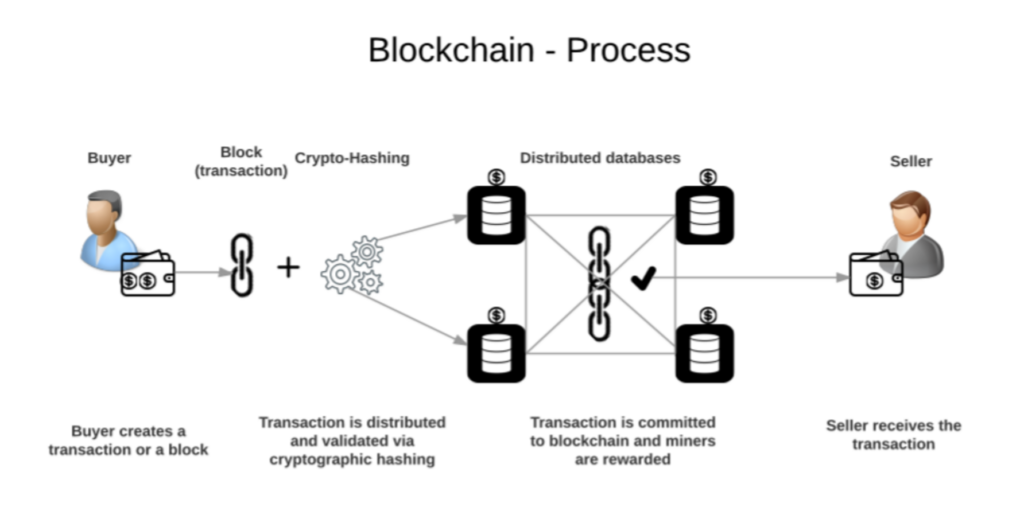
As well as saying Person X sent this much to Person Y.
In a way, it is like the sales receipt that the chick at Burger King gives you when you buy a #1 Whopper Meal.
It also includes important information that allows the rest of the network to verify the validity of the block — such as the solution to a complex math problem — called a proof-of-work. While the math problem is hard to solve, it’s very easy for others to verify a valid solution. New blocks cannot be amended to the blockchain without a valid solution.
A block also includes a reference to the block that immediately precedes it. Thus, the blocks create a chain linking one to another through those references.

The reference to the preceding block is accomplished through something called a cryptographic hash function. A hash function takes a set of data and maps it to a string of letters and numbers called a digest. If anything in the data changes, the resulting hash digest will change as well.
Chaining blocks together by using a hash function to reference the preceding block adds a great level of security to the system. To change a block in the ledger, a hacker would have to reproduce the entire chain of blocks following it, since it would create a chain of invalid hash values referencing the previous block.
It is sort of like making Xerox copies of your Burger King receipt and sending the copies (marked "copy") to everyone in your city.
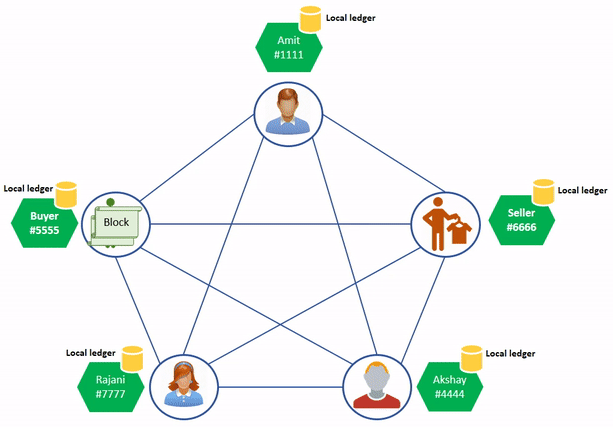
How does a cryptocurrency transaction work?
Cryptocurrency is used for direct peer-to-peer payments anywhere in the world.
The speed of transactions varies based on currency and confirmation requirements, but it’s generally very fast compared with traditional banking systems. Where banks can take days to transfer money, cryptocurrency transfers happen in minutes.
- Bank transactions = days.
- Cryptocurrency transactions = minutes.
In general, cryptocurrency transactions go through the following steps before they get added to the blockchain.
- A person requests a transaction, and the request is sent to the entire network.
- Each computer on the network collects all concurrent transactions into a block, along with a timestamp for each transaction.
- Each computer works on solving the difficult math problem to add the block to the blockchain. This process is called “mining.”
- Once a computer finds a valid solution, it broadcasts the block to the rest of the network.
- The network checks the solution as well as compares transactions in the block against the current blockchain to prevent double spending.
- The block is added to the chain, showing the transaction was completed.
Once a block is added to the chain, that block gets hashed and is used to create the next block. The process continually repeats itself.
As such, transactions are practically irreversible, much the same way as if you give someone cash (hence calling it an electronic cash system). As mentioned, the chaining of one block to another means someone would have to edit the entire chain of blocks to change a transaction.
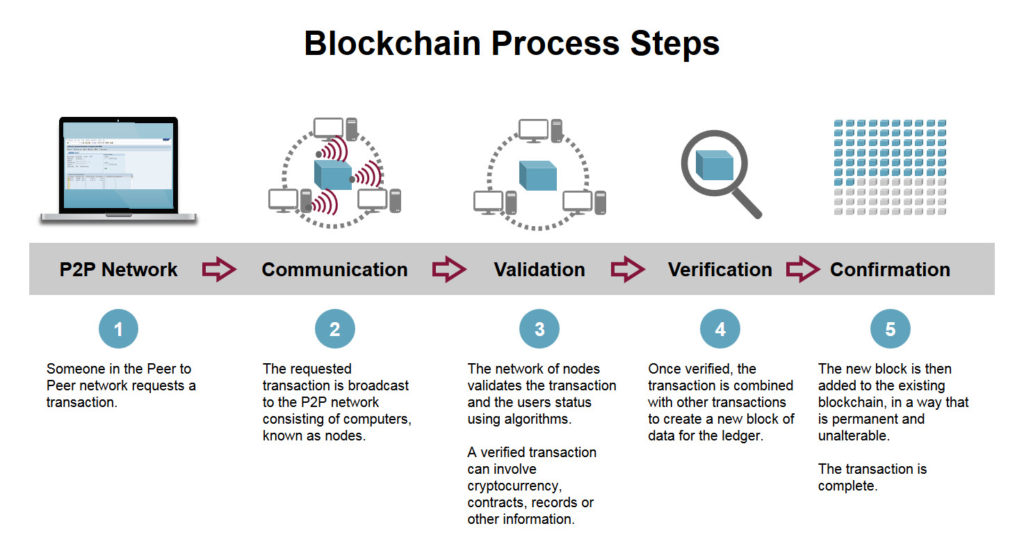
Since blocks are continually added to a chain, it’s extremely unlikely someone will be able to propagate an updated chain of blocks to the network before the rest of the network produces the next block and extends the chain further.
Every transaction needs a signature
Just as credit cards use your signature to verify you authorized a purchase, cryptocurrency uses a signature as well …
… a digital signature.
Transactions are secured through a cryptography system called public key encryption. Each user has both a public key and a private key associated with his or her account.
To authorize a transaction, users must prove they know their private key by using it as an input into a cryptographic hash function similar to the one used to link blocks together in the blockchain. That’s called signing the digest. The private key is used to write that “digital signature,” so it’s very important that the private key remains private.
- Public Key = Each person in the transaction gets a copy.
- Private Key = One (and only one) for each person involved.
What do miners do?
With no central banks deciding when to print more money, a cryptocurrency needs to define how to create new units of the currency. Many cryptocurrencies, like bitcoin, distribute new units to miners as an incentive for verifying transactions on the blockchain.
- “Cryptominers” verify transactions on the blockchain.
- They are paid in bitcoin for their labors.
Miners work to solve the difficult math problem or other proof-of-work systems within every block of the blockchain. They also work to verify the solutions. Running all these calculations have real-world costs, including buying hardware and using electricity.
The difficulty of the math problem for bitcoin blocks is automatically adjusted such that the combined processing power of the network takes about 10 minutes to solve the problem on average.
When a miner successfully adds a block to the bitcoin blockchain, that miner also earns the right to take a reward. The winning miner’s bitcoin address is recorded in the block.
For instance…
- The reward started at 50 bitcoins per block.
- That number is halved every 210,000 blocks (or about every four years).
- The current reward for adding a block is now 12.5 bitcoins, and that number will fall to 6.25 around June 2020.
At some point, the reward for solving a block in the bitcoin blockchain will become extremely small. By 2140, miners will have mined all 21 million bitcoins that will ever be in circulation. At that point, the incentive for miners to update and verify the blockchain will come from transaction fees. Some cryptocurrencies already rely on relatively high transaction fees to offer miners incentive.
Bitcoin miners (cryptominers) used to make their money in bitcoin for mining. Now, their primary source of income is in (high) transaction fees.
Transaction fees are currently relatively small for bitcoin, but if transaction volume doesn’t climb to compensate for the decrease in block rewards, transaction fees will have to increase to compensate miners.
How to buy cryptocurrency
It’s no longer practical to use your home computer, or even a custom-built bitcoin mining computer, to mine bitcoin and most other cryptocurrencies.
Most people will get a better return by buying it through a cryptocurrency exchange.
A cryptocurrency exchange allows consumers to change their fiat currency, like U.S. dollars, into cryptocurrency like bitcoin.
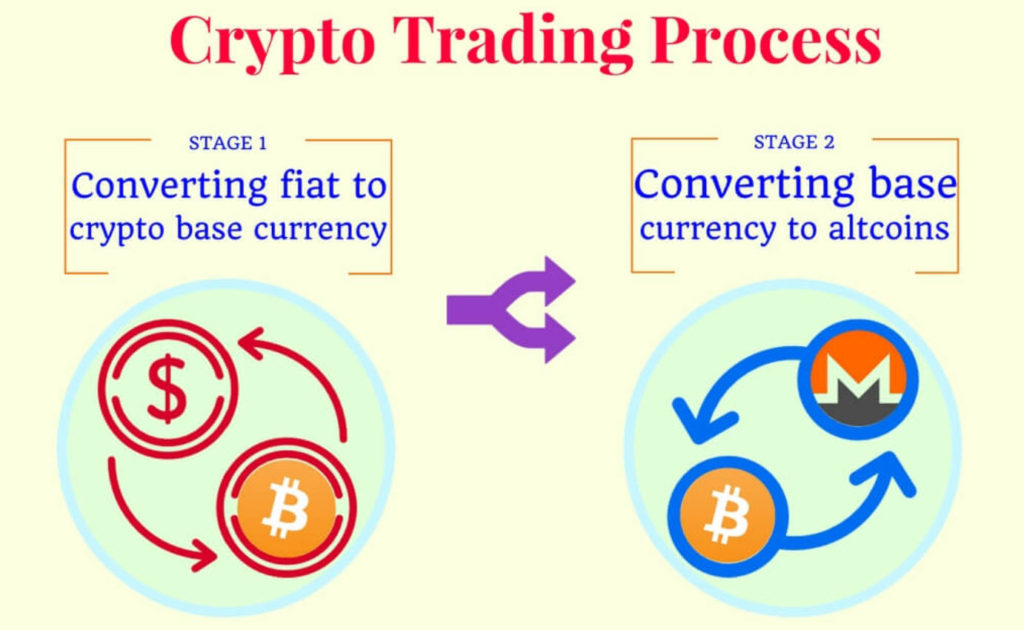
A cryptocurrency exchange works just like any other exchange, such as a stock exchange. It matches buyers and sellers based on a book of orders. As orders are added to the book, the exchange matches buyers willing to pay the same amount (or more) than sellers are requesting.
“What is cryptocurrency” revisited
To recap, I defined cryptocurrency as …
"an electronic cash system that doesn't rely on central banks or trusted third parties to verify transactions and create new units. Instead, it uses cryptography to confirm transactions on a publicly distributed ledger called the blockchain, enabling direct peer-to-peer payments."
Let’s break that down.
- “An electronic cash system“: Cryptocurrency has no physical form. Ownership is determined by the digital record found in the blockchain.
- “Uses cryptography“: Transaction requests are authorized and confirmed through public key encryption. The blockchain also uses encryption to link blocks to one another.
- “Confirm transactions“: The chain of transaction data in the blocks allows the network to verify that a transaction hasn’t already occurred — the double spending problem — and to add new transactions to the ledger.
- “A publicly distributed ledger“: The blockchain ledger is available to all the computers on the network. In fact, its publicity is essential to making the entire system work. By keeping an updated transaction ledger on every computer on the network, the system is able to protect against changes to the blockchain and verify transactions and ownership.
- “Direct peer-to-peer payments“: Payments never go through a central banking system or trusted third party but instead simply move from payer to payee. This process increases the speed of transactions and reduces the fees associated with transferring money.
Cryptocurrency is a complex new form of electronic cash. With no reliance on central banks to confirm transactions or authorize the creation of new units, it can dramatically reduce the fees and time associated with moving money around the world.
Conclusion
People are still coming up with new applications for blockchain technology and new cryptocurrencies every day. With this basic overview of what cryptocurrency is, you can start developing a deeper understanding of the various currencies available.
"The only stable and viable solution for the species to survive is a new eco-civilisation, based on a global non-market economic system, in which the private tyranny of the market – a global plutocratic elite of profit mongers – and anti-democratic oligarchic political systems do no longer rule the destiny of the people," -Dieterich
Make no mistake, banking systems, and the way they operate is changing. Whether it will happen soon (with the e-yuan system currently in use) or in the distant future,(if the PTB that control America has their way), it will happen.
I think that it is important to understand that things are changing and the old way of doing things are being supplanted with better, fairer and more complete systems. And those that lived off the corruption of the old systems are not going to go away peacefully in the night. Instead they will fight. They will fight tooth and nail to keep the status quo.
Do you want more?
I have more posts in my Happiness Index here…
Life & HappinessArticles & Links
You’ll not find any big banners or popups here talking about cookies and privacy notices. There are no ads on this site (aside from the hosting ads – a necessary evil). Functionally and fundamentally, I just don’t make money off of this blog. It is NOT monetized. Finally, I don’t track you because I just don’t care to.
To go to the MAIN Index;
Master Index.
- You can start reading the articles by going HERE.
- You can visit the Index Page HERE to explore by article subject.
- You can also ask the author some questions. You can go HERE .
- You can find out more about the author HERE.
- If you have concerns or complaints, you can go HERE.
- If you want to make a donation, you can go HERE.
Please kindly help me out in this effort. There is a lot of effort that goes into this disclosure. I could use all the financial support that anyone could provide. Thank you very much.
[wp_paypal_payment]

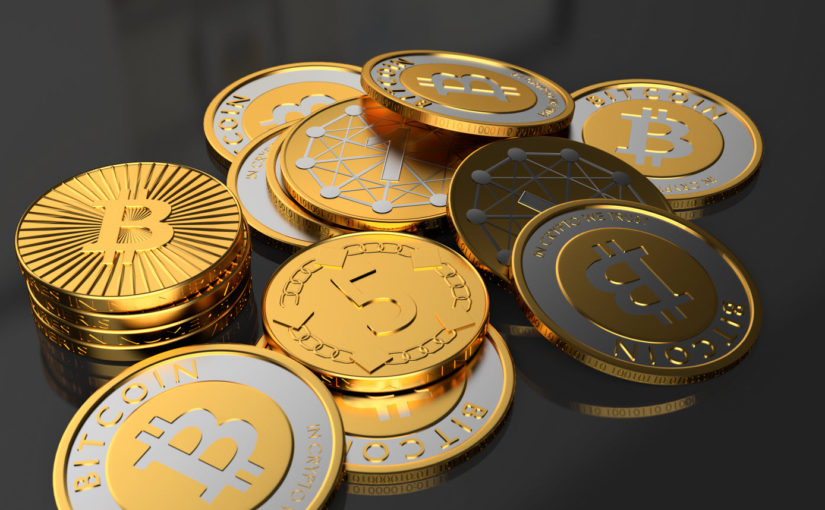

Just sharing a video about the Gartner Hype Cycle.
https://vimeo.com/464835556
I just updated an older post regarding accidental dimensional travel and returning with a Beatles mix-tape. I noticed something strange about that cassette tape. And so updated the post.
https://metallicman.com/laoban4site/a-world-line-where-the-beatles-never-broke-up/